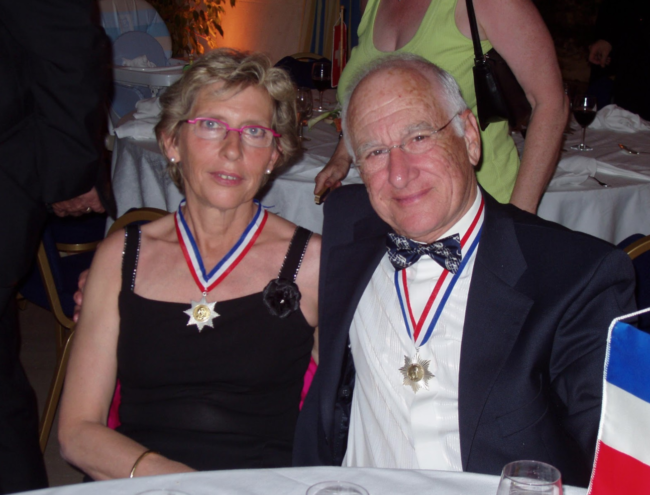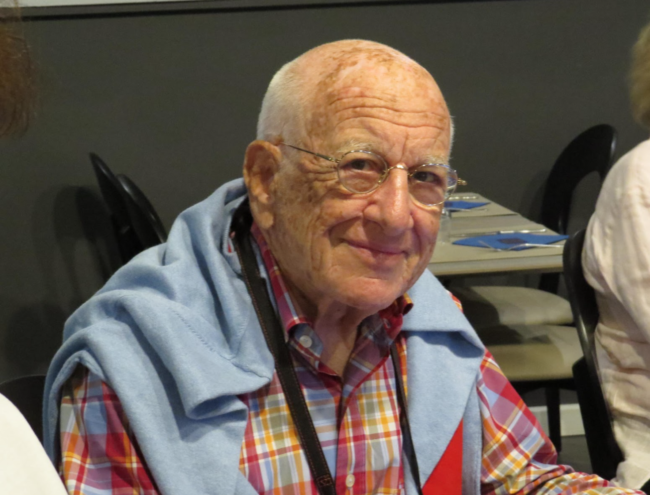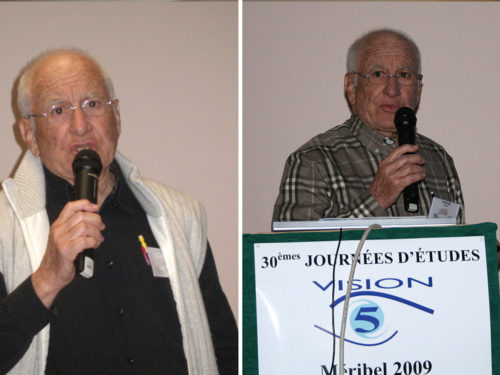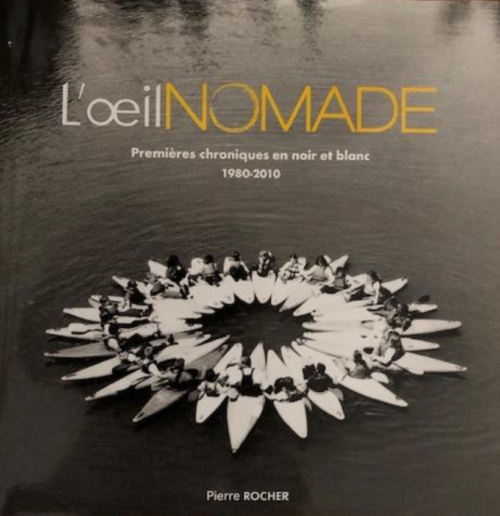

Is remembered by the Contact Lens profession and industry as a visionary, leader and mentor.
After Optometry school he became a diplomat of the National Marketing Institute and the Business School IFG
For 18 years he was Head of the Essilor Contact Lens Department. In 1955 he created their production unit for scleral lenses.
There followed 5 years as Director and General manager of the American Optical Co, Division Europe, for Contact Lenses and ophthalmic lenses
He was a founding Member of the European Federation of the Contact lens Industry in 1974 (EFCLIN).
In 1978 he founded his own laboratories: Amiflex Laboratories, the first manufacturer of Gas Permeable Contact Lenses in France (Polycon) and Amisol laboratories for contact lens solutions. He subsequently sold these laboratories and patents to ALCON.
He was one of only 4 Fellows of the “American Academy of Optometry”
He was a Past President of the “International Society of Contact Lens Specialists” having attended his first congress in 1967. He organised three ISCLS congresses in France, in “abbey Royaumont”, “abbey des Vaux de Cernay” and Saint Paul de Vence. In 1980, he was awarded the Herschel Medal, for his contribution to knowledge in the field of contact lenses.


He was a Charter Member and Emeritus Member of the “International Society for Contact Lens Research”
Since 1963 numerous lectures and articles on Contact Lenses and on the Optical Market, in French, English (2 with Professor Irving Fatt) and German.
He wrote the first report with Professor Pouliquen in France about contact lenses, and the history of contact lenses in a book “Contactology”
Between 1963 and 1967 he organised the “Abbey of Royaumont contact lens conferences” for Silor, with ophthalmologists, optometrists and manufacturers in attendance.
The very first lecture of Professor Otto Wichterle in the Western World was given in Royaumont in 1964.
Pierre spawned a project to erect commemorative plaque to honour Professor Wichterle which was presented in 2012, by Tim Bowden and Brien Holden. At the same time Otto Wichterle received a Gold Medal for his services to contactology by the Czech Contact Lens Society.
Over the years he invited numerous speakers to deliver lectures in France, increasing the knowledge in his country.
Trade unionist, industrialist, go-between and transmitter, at the height of his professional recognition, In 1984 Pierre decided to leave the manufacturing of contact lenses to devote himself to his core profession, optometry. He therefore created his own optometric practice (staff of 10) VISION CONTACT in Paris, specialised in following: – fields, binocular vision, presbyopia, near vision and low vision with Lighthouse (NY) method.
As such he served as President of the Chamber of Opticians of Île-de-France (the Greater Paris Region) from 1994 to 2014.
And to work toward a better understanding between the professions of optician and ophthalmologist, he launched In 1980, of “Les Journées d’Etudes Vision-5”, an independent Foundation, in Méribel, French Alps, where science, technology and good humour went hand in hand each year.
A group of 70 ophthalmologists, optometrists, orthoptists, members of the Faculty,
laboratories gather every year, skiing from 9am till 3pm and lectures from 4pm to 8pm on all kinds of subjects related to all aspects of eye and vision : glasses, contact lenses, refractive surgery, corneal surgery, cataract, IOL, retina and binocular vision.
2009 saw the 30th conference in Méribel, which still continued today with the same spirit.
In 2011, he was made Chevalier dans l’Ordre National du Mérite (Knight in the French National Order of Merit) by Professor Pouliquen, a well-known ophthalmologist, member of the French Academy and of the Academy of Medicine. There’s much symbolism in that: Pierre worked throughout his life to bring together the professions of optician (optometry) and ophthalmology to ensure better care for the public’s visual health.
“Pierre’s contribution to the visual health sector was not only essential. Pierre stands in History among a handful of men who have created the conditions of possibility and showed us their greatness. He knew how to carefully connect each thread: scientific, medical, technical, cultural, even philosophical.” said Professor Pouliquen
“However, he can’t be defined by his profession. Because Pierre was what we call an “honest man,” worthy heir to the Enlightenment: an erudite of infinite knowledge because constantly learning, never immobilized by dogma or certitude, never satiated. “
“A man of untiring curiosity, ceaselessly listening to other cultures in the world, to their singularity and their achievements.”
A great traveller, a talented photographer, he never stopped paying homage to human genius in all its various aspects. With the humility of a researcher and the sense of wonder of an aesthete, he sought out shapes, ideas, arts and technologies. His passion embraced a wide field: the symbolism of churches, the history of technologies, industrial archaeology, the history of aviation, without forgetting theatre, music, particularly that of his dear Johann Sebastian Bach, which brought him each year to the Leipzig Festival.

In 2013, Pierre discreetly published an extraordinary book, “The Wandering Eye,” a sumptuous collection of photographs that he’d taken around the world since 1980.
This book “First Chronicles in Black and White” is writhed in both language French and English.
He tells in it of his encounter with Willy Ronis, one of the great photographers of the 20th century, whom he knew during the Second World War when he found refuge at Pierre’s parents’ house in Dordogne. That work, which he called “a book of curiosity,” was for him the opportunity to meditate on the world of shapes and to express in image his surprise and admiration for untiring human creativity. It’s also a formidable homage to his profession because the world’s beauty is above all in the way we look at it.
He loved Mankind, he loved life!
There wasn’t a city in the world where he didn’t have a friend!
He knew how to transmit with benevolence, with his brilliant look of love not only to the other person but also to what he was transmitting.
He knew how to receive, he was “receptive to messages from nature, from man and from the infinite” and was always young, despite his 87 years, as General MacArthur said.
This is how we will remember Pierre: that smile full of empathy and of sincere jubilation, always ready to be amazed, whether by the profile of a plane, an architecture from antiquity, or the laughter of a child.